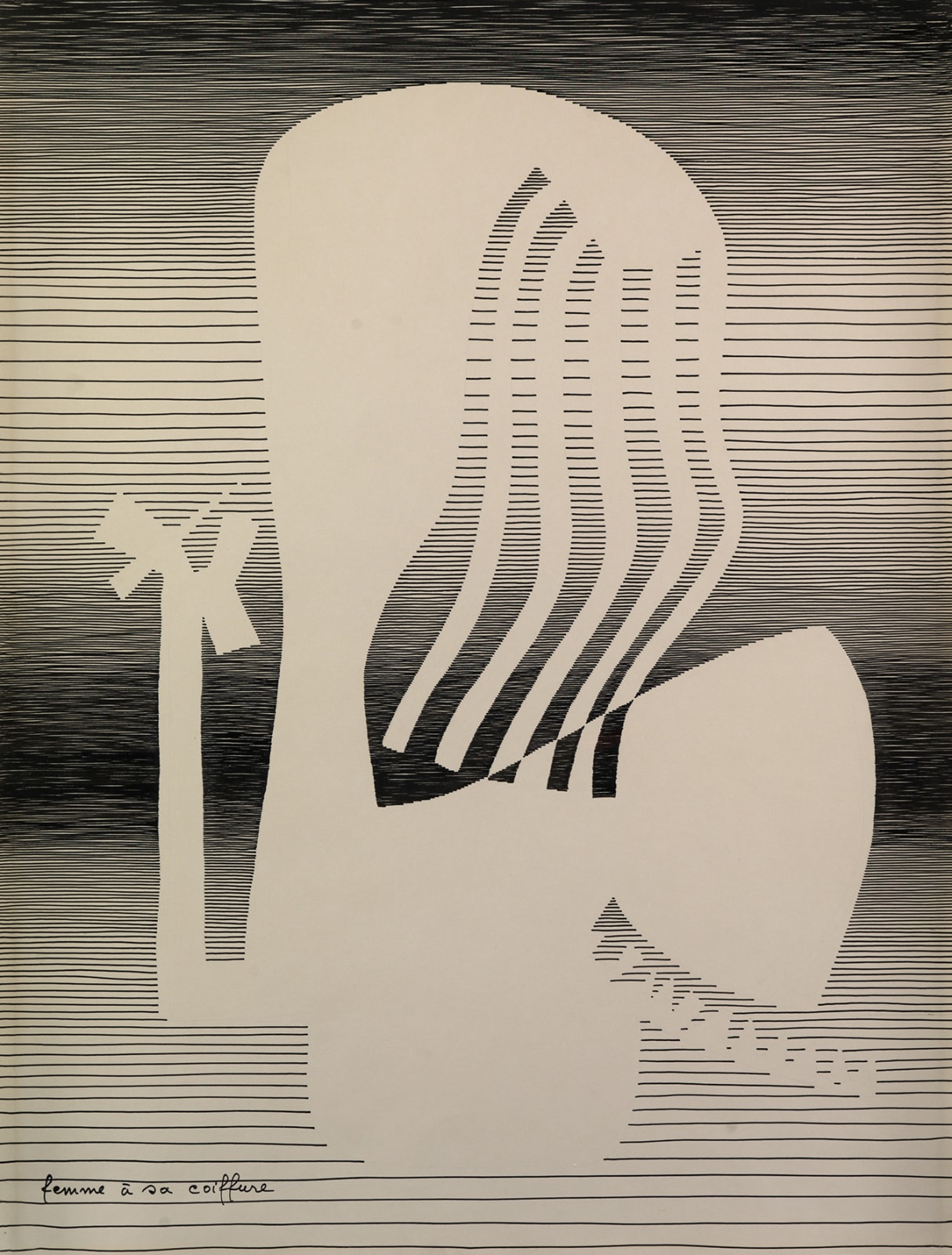Michel Seuphor French, 1901-1999
Femme à sa coiffure, 1959
Dessin à lacunes, china ink on paper
67 x 51 cm
Titled lower left
Signed and dated'' 16 May 1959'' verso
Signed and dated'' 16 May 1959'' verso
Born in Antwerp, Fernand Berckelaers adopted the pseudonym 'Seuphor', an anagram for Orpheus, in 1917. During his long career as a writer, poet, art critic and artist, Seuphor made an...
Born in Antwerp, Fernand Berckelaers adopted the pseudonym 'Seuphor', an anagram for Orpheus, in 1917. During his long career as a writer, poet, art critic and artist, Seuphor made an important contribution to art history.
From 1922 onwards Seuphor moved at the heart of the European avant-garde in Berlin, Rome, Amsterdam and Paris and frequented the pioneers of Cubism, Dada, Futurism, Constructivism and Neo-Plasticism including Robert and Sonia Delaunay, Piet Mondrian, Fernand Léger, Albert Gleizes, Jean Arp and Sophie Taeuber-Arp, Herwarth Walden, Filippo Tommaso Marinetti, Gino Severini and Joaquin Torrès-Garcia.
As a critic and writer, Seuphor left an important bibliography, including l'Art abstrait, ses origines, ses premiers ma (1948), Piet Mondrian, Life and Work (1956) and La peinture abstraite en Flandre (1963).
As an artist Seuphor is credited with the invention of the so-called 'dessin à lacunes', drawings or collages in which abstract forms are created by the empty spaces between the lines.
From 1922 onwards Seuphor moved at the heart of the European avant-garde in Berlin, Rome, Amsterdam and Paris and frequented the pioneers of Cubism, Dada, Futurism, Constructivism and Neo-Plasticism including Robert and Sonia Delaunay, Piet Mondrian, Fernand Léger, Albert Gleizes, Jean Arp and Sophie Taeuber-Arp, Herwarth Walden, Filippo Tommaso Marinetti, Gino Severini and Joaquin Torrès-Garcia.
As a critic and writer, Seuphor left an important bibliography, including l'Art abstrait, ses origines, ses premiers ma (1948), Piet Mondrian, Life and Work (1956) and La peinture abstraite en Flandre (1963).
As an artist Seuphor is credited with the invention of the so-called 'dessin à lacunes', drawings or collages in which abstract forms are created by the empty spaces between the lines.
Provenance
Private collection, France.
